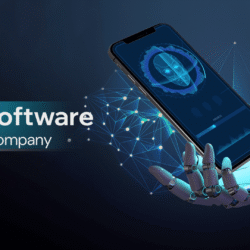In today’s business environment, the necessity of managing assets efficiently is a crucial aspect of success for any organization. Keeping a track of the resources of the organization can be a very challenging task, especially in large, multi-location and enterprises having multiple branches. In today’s business environment, where organizations are growing rapidly and digital transformation is a need of the hour, adopting asset management platform has become increasingly vital. This is where Maco AMS, being one of the best Asset Management Software in India, comes into play.
Asset Management Software: What Is It?
A digital application called asset management software is used to track, monitor, and manage an organization’s assets. These resources may consist of digital information, automobiles, machinery, furnishings, IT equipment, and licensing. Businesses can centralize asset data, lower losses, and boost operational efficiency with Maco Infotech’s asset management system , hereinafter referred to as Maco AMS.
Here are the top benefits of using Maco AMS –
1. Centralized Asset Tracking
Maco AMS is an excellent centralized platform to record and monitor every asset across different locations and departments. Organizations in India, especially those with multiple branches in different locations, benefit from having a centralized view of their assets. This ensured accurate tracking of the company’s assets, reduced duplication of effort and prevented assets from getting underutilized or being misplaced.
2. Improved Compliance and Audits
Organisations must comply with statutory regulations that include depreciation accounting standards as per the Income Tax Act and the Companies Act, audit trails and asset tagging. Maco AMS automates the calculations as per compliance by maintaining detailed logs, histories, and reports for each asset, making the process of auditing much more accurate and efficient. Maco AMS supports RFID tagging, barcode tagging, ensuring further compliance during physical verification of assets.
3. Reduced Operational Costs
Asset loss, theft and unnecessary procurement are a result of inefficient asset tracking. Maco AMS helps to maximize the use of existing resources so that organizations can reduce operational costs and capital expenditure significantly. Maco AMS helps to identify redundant assets and avoid duplicate purchases.
4. Accurate Depreciation Calculation
Calculation of depreciation manually can lead to various accounting errors and financial discrepancies. Maco AMS automates the calculation of depreciation based on customizable methods such as SLM, WDV, etc. and schedules. This ensures accuracy in financial reporting of asset value and helps organizations to remain compliant with tax regulations.
5. Real-time Reporting and Insights
Maco AMS helps business organizations make well-informed decisions. Indian businesses can generate detailed reports on maintenance schedules, asset health, usage and lifecycle stages. Maco AMS helps organizations with real-time data and advanced tools for reporting. These insights empower management in organizations to plan better allocation of resources, budgets and forecast future requirements of assets.
6. Scalability and Flexibility
Maco AMS is a highly scalable and customizable platform for organizations to keep track of their assets. As the organization grows, the software can easily onboard new assets, locations and users without any significant changes to the infrastructure. Maco AMS also offers a mobile app for remotely viewing audit metrics and asset tracking.
7. Security and Access Control
Maco AMS ensures the data security of organizations. Maco AMS provides role-based access control, encryption of data and user activity logs to ensure sensitive data can only be accessed by authorized personnel, thereby minimizing the risk of internal fraud or misuse.
Top features
Today’s business environment is driven by automation, with most activities designed to minimize human intervention. In the man-versus-machine era, asset management is increasingly handled by cloud-based software and high-speed computing. Effective asset monitoring is not just important—it is essential for smooth operations, cost reduction, and improved productivity. Selecting the right asset management software can be challenging, as every business has unique needs. It is important to align your requirements with a solution that fulfills them while remaining cost-effective.
1. Asset Location
Real-time asset location tracking is among the most crucial aspects. You should be able to keep an eye on the whereabouts and condition of assets at all times with the software. It should automatically update the current positions of assets, whether they are stationary or moving between departments or locations. This improves accountability, minimizes asset loss, and simplifies logistics.
2. Barcode and RFID Integration
Barcodes, QR codes, and RFID tags are the backbone of modern asset management systems. By scanning these tags, assets can be quickly identified and tracked at various levels. Robust software should support barcode and RFID integration, enabling fast scanning and bulk asset verification. Automated updates from scanned data significantly reduce manual errors.
3. Centralized Asset Database
Organizations with different locations should choose software that provides a centralized repository for all asset-related data. Details like asset ID, location, category, vendor, purchase date, cost, current status, maintenance history, and depreciation should all be stored in an advanced system. Consistency, accessibility, and improved control throughout the company are guaranteed by a centralized database
4. User-based Access
Modern businesses prefer software with role-based user access modules that assign responsibilities to employees. Protecting sensitive data is a top priority, so administrators must limit access and grant editing rights only to authorized personnel.
5. Automated Alerts and Notifications
Notifications play a key role in ensuring timely actions. Automated alerts can prevent penalties for late payments, remind teams of scheduled maintenance or calibration, and track warranty expirations. This feature saves time, helps in quick decision-making, and prevents costly errors. It is an essential factor to consider when selecting asset management software.
Conclusion
In a competitive and dynamic environment, business organizations must adopt smart, technology-driven software platforms or solutions to stay ahead. Software for asset management, like Maco AMS, is no longer a luxury; rather, they are a necessity. It enhances transparency, improves compliance, and drives better utilization of resources. Irrespective of the size of the organization, investing in a reliable asset management software will lead to increased operational efficiency and long-term savings.





